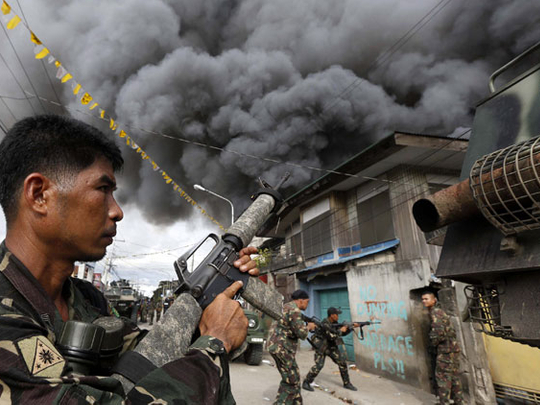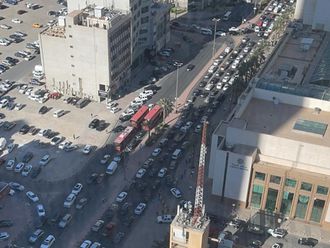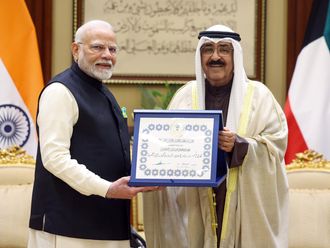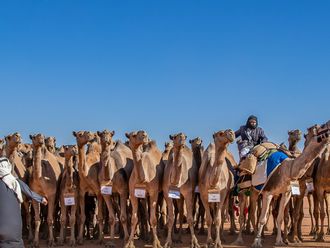
Manila: Government forces failed to attack six rebel-occupied Muslim-dominated villages in Zamboanga, southern Philippines.
They, however, succeeded in preventing rebel intrusion in Zamboanga City, now paralysed after Filipino-Muslim rebel leaders renewed an armed struggle, following a founding rebel leader’s claim that government negotiators refused to review the implementation of a pro-autonomy peace accord that their group signed with the Philippine government in 1996.
Explaining the military’s mission in the standoff that began since Monday, Armed Forces information chief Lieutenant-Colonel Ramon Zagala said: “Our troops return fire. We are not launching an offensive. Our mission is to contain them (the Moro National Liberation Front fighters), not to rescue their hostages (at Kasanyangan, Mampang, Sta. Barbara, Sta. Catalina, and Talon-Talon villages).”
The military is worried about civilian casualties, if attack in launched on MNLF-controlled residential villages in Zamboanga, said Zagala.
At the same time, MNLF rebels also tried but failed to enter urban Zamboanga City, after secretly exiting from several six Muslim-dominated coastal villages in the city’s peripheries.
Ten MNLF members got off their vehicles near a checkpoint in Canelar Village. Two MNLF rebels were shot, the rest managed to escape, said a military report. Canelar village is less than two kilometres away from the Zamboanga City’s international airport and Edwin Andrews Air Base of the Air Force.
At the same time, three wounded MNLF rebels were arrested in another government-established roadblock, the same report said.
Aided by checkpoints, ground government forces have prevented MNLF rebels’ movement from one occupied village to another, so that commanders remained isolated and could not reinforce each other, the report added.
In Sta. Barbara, MNLF rebels were criticised of committing atrocities following reports that hostages were tied together by rope, and they were allegedly forced to wave white flags or shout at soldiers, telling them not to shoot as the latter tried to stop rebel snipers on rooftops to stop firing and launching mortar shells.
Some 1,500 ground troops composed of elite soldiers and policemen, armoured personnel carriers, and helicopters maintained posting of 500 meters away from Sta. Barbara and Sta. Catalina villages, two villages with the most number of MNLF rebels.
MNLF rebels fired two mortar shells from Fort Del Pilar and one from the State College of Marine Science and Technology, said Interior and Local Government Secretary Mar Roxas.
Some structures were burned in Sta. Barbara. “But our fire engineers could enter Sta. Barbara,” said Roxas.
Mayor Isabelle Climaco-Salazar of Zamboanga City called for negotiations and conflict resolution between the Philippine government and the MNLF.
But Roxas, Defense Secretary Voltaire Gazmin, and Armed Forces chief Gen. Emmanuel Bautista who were sent by President Benigno Aquino to Zambooanga did not give details about the government’s response to a negotiation with the MNLF.
Less than 200 MNLF rebels have been holding 200 civilian hostages in Zamboanga’s six rebel-controlled coastal villages.
Zamboanga City, dubbed as a city of flowers with its cultivation of orchids, has been “eerily quiet, like a ghost town,” said Dr. Kryss Cristobal.
Commercial centres, schools, offices, markets, hotels, sea and airports remained closed since Monday.
Twelve, including two policemen, one military man, two civilians, and seven MNLF rebels were killed, 34 including 21 civilians were wounded, and 13,000 from the 160,000 residents of the six rebel controlled villages were displaced because of the MNLF attack.
“The latest fatality was a member of the Special Action Force who succumbed to a bullet wound to the head on Wednesday night,” said Roxas.
MNLF founder Nur Misuari signed two pro-autonomy peace accords with the Philippine government in Libya in 1976, and in Manila in 1996.
The Moro Islamic Liberation Front (MILF) because a faction of the MNLF in 1978, in reaction to the signing of the Philippine government and MNLF peace accord in 1976.
In 2001, in response to the Philippine government and MNLF pro autonomy peace settlement, the Philippine Congress amended a law that allowed another referendum for autonomy in the south, which resulted in the expansion of the existing Autonomous Region in Muslim Mindanao (ARMM). It is now composed of five provinces and one city. It had four provinces following a first referendum in 1989.
Misuari was elected ARMM governor after the signing of the Philippine government and MNLF peace accord in 1996. In 2001 he renewed his arm struggle after the ruling party in Manila did not support his bid for the ARMM’s gubernatorial seat.
Last month, Misuari complained that he was sidelined when the Philippine government and the MILF forged a framework agreement in 2012 on the expansion of the ARMM with proposed six towns and 800 Muslim-dominated villages in the south, for enhanced self-governance of Filipino-Muslims.
Last August 12, he declared the independence of Mindanao in the south, where about eight Filipino-Muslims are based. He also called for the establishment of the Bangsamoro Republik, which includes Mindanao, Palawan in southwestern Philippines, and Sabah in Malaysia, near the border of Mindanao’s Sulu Province.











